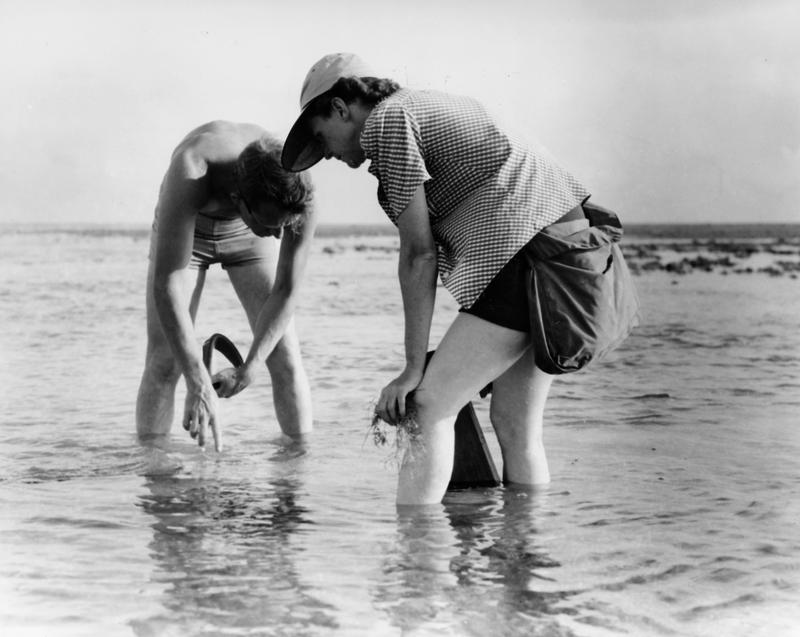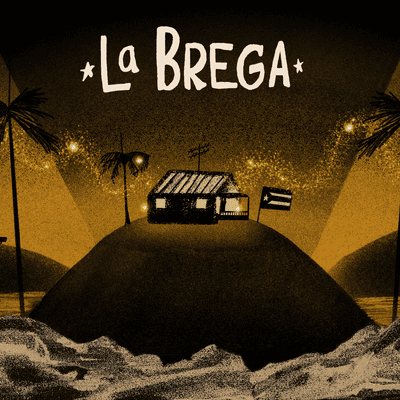Rachel Carson Dreams of the Sea

New York Public Radio transcripts are created on a rush deadline, often by contractors. This text may not be in its final form and may be updated or revised in the future. Accuracy and availability may vary. The authoritative record of New York Public Radio’s programming is the audio record.
Speaker 1:
Listener supported WNYC Studios.
Speaker 2:
This week is the 50th anniversary of the first Earth Day in April 1970. So, to close the show, we're going to remember Rachel Carson.
Speaker 2:
Probably more than any other person, Carson helped to launch the environmental movement as we know it today, and it came with her book Silent Spring.
Speaker 2:
But Carson's earlier writings, also published in the New Yorker, contain the seeds of what made her so influential. Here's Carson speaking in 1951.
Rachel Carson:
I seem to have been born with a fascination for the sea. For years before I ever saw it, I thought about it, dreamed about it and wondered what it could be like.
Speaker 2:
Carson's writings about the sea were filled with a sense of wonder and poetry. Here's actress, Charlayne Woodard reading Rachel Carson.
Charlayne Woodard:
In mid-summer, life in the surface water slacks to a slower pace. The red jellyfish, Cyanea, usually has grown from the size of a thimble to that of an umbrella.
Charlayne Woodard:
This great jellyfish moves through the sea with rhythmic pulsations, trailing long tentacles, and as likely as not shepherding a little group of young Cod or haddock, which finds shelter under its bell and travel with it.
Speaker 2:
And here's Jill Lepore, a staff writer for the New Yorker and a professor of history at Harvard.
Jill Lepore:
So, Rachel Carson was born nowhere near this age. She was born near the Allegheny River in Western Pennsylvania in 1907. She grew up on a kind of dilapidated farm. It wasn't really a working farm anymore. Her father was sort of a bit of a traveling salesman, but not a successful one.
Jill Lepore:
She went to college to become a poet, she was going to study English. She though changed her whole focus of her college education, when she took a biology class and she fell in love with her biology professor became deeply passionately attached to this quite incredible woman, Mary Scott Skinker and who spotted in young Rachel Carson something quite promising and special and managed to secure for her a summer position at Woods Hole on Cape Cod, this pathbreaking oceanographic institute.
Jill Lepore:
This was 1928, she was 21 years old. She'd never seen or smelled the ocean before.
Rachel Carson:
I had my first prolonged contact with the sea at the Marine Biological Laboratory at Woods Hole. There I never tired of watching the tidal currents racing through the Hole, that wonderful place of whirlpools and eddies and swiftly running water. And I love to watch the waves breaking at Nobska Point after a storm.
Jill Lepore:
She didn't really know how to swim, she was terrified of boats, but there was something just so magical. It's sort of, if you picture a little boy who always wanted to be an astronaut and kind of landing on Mars.
Charlayne Woodard:
The summer sea may glitter with millions of moving pinpricks of light, like an immense swarm of fireflies. This effect is produced by a shoal of the brilliantly phosphorescent shrimp, Meganyctiphanes.
Charlayne Woodard:
A creature of cold and darkness and of the places where icy water rolls upwards from the depths and bubbles to the surface.
Jill Lepore:
From that first summer at Woods Hole, Carson would roll up her pant legs and take off her shoes and she would climb all over the shoreline.
Jill Lepore:
She would climb up and down the dunes, she would wait out into the water. She would be gone for hours upon hours, upon hours. She would get up in the middle of the night to wander onto the beach with a flashlight, looking for the nightlife.
Charlayne Woodard:
I remember a moss carpeted ledge jutting out from the rock wall oversea depths, where luminarias rolled in with the tide.
Charlayne Woodard:
The moss was saturated, holding water as faithfully as a sponge, down within the deep pile of that moss I caught a glimpse of bright rosy color. At first...
Jill Lepore:
Carson became devoted to the study of the sea after that summer in Woods Hole. And she decided to go to graduate school.
Jill Lepore:
She entered a PhD program at Johns Hopkins, really ambitious thing for any woman to do. She started in 1932, we're in the depths of the depression by now. Her family has no money, her family is entirely dependent on her and she's in graduate school.
Jill Lepore:
She moves to Baltimore, but her mother, her ailing father, her divorced sister, her sister's two really little children all come to live with her and Carson has to support them. She works as a lab assistant, she teaches biology. She ends up leaving her PhD program with a master's degree and takes a job at the Bureau of Fisheries where unsurprisingly she's hired to write brochures.
Jill Lepore:
The kinds of brochures they were putting together were about as interesting as the terms of service when you click on to a new app, like they're just really technical writing and they might explain the life cycle of a seagull, for instance.
Jill Lepore:
So, she's writing brochures and they have this just majesty. They're just majestic and they're intimate and they're also shocking and they're dramatic and they have characters, but no one has heard anyone write about the sea like this before.
Jill Lepore:
Certainly not the Bureau of Fisheries. And so, her supervisor says, "Look, your writing is actually too good for these brochures, you should start sending it around."
Jill Lepore:
And her breakthrough, her first breakthrough essay in 1937 is published in the Atlantic, which I always think is somehow fitting. And it knocks people's socks off.
Rachel Carson:
People often seem to be surprised that a woman should have written a book about the sea. This is particularly true I find of men, perhaps they have been accustomed for a long time to thinking about the more exciting fields of science as exclusively masculine domains.
Rachel Carson:
In fact, one of my correspondence a few days ago addressed me as "Dear Sir" explaining that although he knew perfectly well that I was a woman, he simply could not bring himself to acknowledge the fact.
Charlayne Woodard:
Tide pools contain within their depths mysterious worlds, where all the beauty of the sea is subtly portrayed in miniature. I remember one so small that as I lay outstretched on the rocks beside it, I could easily touch it's far shore.
Charlayne Woodard:
It's floor was paved with mussels, their shells were a soft color, the misty blue of distant mountain ranges and their presence gave an illusion of depth.
Charlayne Woodard:
The water in which they lived was so clear as to be invisible to my eyes. I could detect the interface between air and water only by the sense of coldness on my fingertips. This crystal water was filled with sunshine and infusion and distillation of light that reached down and surrounded each of the small and resplendent shellfish with its glowing radiants.
Jill Lepore:
Carson complained a lot about the way people wrote about the sea and the way they wrote about nature, which was, they made a catalog of things. And there'd be no relationship between one thing and the other, between the environment and the creature.
Charlayne Woodard:
The shells of the mussels provided a place of attachment for the only other life that I could see in the pool. Fine as the finest threads, the basel stems of colonies of hydroids traced their faintly discernible lines across the shells.
Charlayne Woodard:
The hydroids belong to the group called Sertularia in which each individual of a colony and all the supporting and connecting branches are enclosed in transparent sheaths, like a tree in winter after an ice storm.
Jill Lepore:
She saw when she looked down into a tide pool, how everything was attached to everything else, how everything was dependent on everything else.
Charlayne Woodard:
I lay beside the pool, and with my hand lens brought the hydroids into clearer view. They seem to me to look nothing so much as pieces of exquisite cut glass, each of them, perhaps a segment of an intricately wrought chandelier.
Charlayne Woodard:
On what, I wondered, were all these Sertularians carnivorous like all hydroids feeding? From their very abundance I knew that whatever creatures serve them as food must be many times more abundant than the hydroids themselves, yet I could see nothing.
Charlayne Woodard:
Then somewhere in the crystal clarity of the pool, my eye detected, or so it seemed-
Jill Lepore:
So, you can picture Carson there lying on her stomach with her face pressed into that tide pool. That's how she gains and captures your attention bringing you intimately into that world and giving you this tour of it from what appears to be the most vulnerable, tiniest, most insignificant piece of this tiny, tiny little tide pool and showing you step by step.
Charlayne Woodard:
I sense that the fine mist-
Jill Lepore:
How you too are tied to them.
Charlayne Woodard:
Yet I knew that it was only the imperfection of human vision that prevented me from seeing the microscopic hoards of water fleas, copepods, and worms on which the hydroids were preying with those groping, searching tentacles that were themselves barely discernible.
Charlayne Woodard:
Even more than the visible life in the pool, the life I could not see came to dominate my thoughts. And finally, the members of that invisible throng seemed to me the most powerful beings in the pool.
Charlayne Woodard:
Both the hydroids and the mussels were utterly dependent on this invisible flotsam of the tight streams. The mussels as passive strainers of plant plankton, the hydroids as active predators seizing and ensnaring microscopic animals.
Charlayne Woodard:
And should the plankton become less plentiful, should the incoming tide stream somehow become drained of this life, then the pool would become a pool of death, both for the mussels in their shells blue as mountains and for the crystal coolness of the hydroids.
Jill Lepore:
So, what Carson does so effectively here is communicate just how important are things that we can't see. She's teaching a reader who might wonder about whether invisible things matter that they do matter.
Jill Lepore:
And that's really the same insight that she communicates that she brings to her most famous work, Sound Spring, which appears in 1962, but which Carson had been thinking about since 1945.
Charlayne Woodard:
The chemicals to which life is asked to make its adjustment, are no longer merely the calcium and silica and copper and the rest of the minerals washed out of the rocks and carried in rivers to the sea.
Charlayne Woodard:
They are also the synthetic creations of man's inventive mind, brood in his laboratories and having no counterparts in nature. To adjust to these chemicals would require time on the scale that is natures. It would require not merely the years of a man's life, but the life of generations.
Jill Lepore:
Carson would say about the chemical companies that they thought that they could repeal the balance of nature, but you couldn't repeal the balance of nature anymore than you could rescind the law of gravity.
Jill Lepore:
That this audacity of chemists and scientists in trying to conquer nature with these pesticides was wrongheaded. And she made that claim with great temerity and determination at a time when she herself was suffering from cancer.
Jill Lepore:
She had been diagnosed with breast cancer, she'd had a radical mastectomy, she'd had radiation, she was quite ill. She was considerably hobbled. She'd lost her hair, she was often in a wheelchair and yet she hid her illness from the whole world.
Jill Lepore:
Went before Congress to testify, did her best to get her claims out into the world and began planning her next project. She wanted to go back after Silent Spring to writing about the sea
Charlayne Woodard:
Curious changes have been taking place with many animals invading the cold temperate zone from warmer waters and pushing up through Maine and even into Canada.
Jill Lepore:
She'd noticed, as many scientists had began to notice by the 1950s, that the world's oceans were getting warmer.
Charlayne Woodard:
This phenomenon is clearly related to the widespread change of climate that is now well-recognized. A general warming up having been noticed first in the Arctic regions, then in the subarctic and more recently in the temperate areas of the Northern States.
Jill Lepore:
We tend to think the debate about climate change is a recent debate, or that the observation that the seas are rising is a new thing, but this is something Carson noticed in the 1950s.
Charlayne Woodard:
One of the most impressive examples of this North ward movement is provided by the green crab, once unknown North of the Cape, but now well known to every clam fishermen in Maine because of its habit of preying on the young states of the clam.
Charlayne Woodard:
At the beginning of this century, zoological manuals gave its range from New Jersey to Cape Cod. In 1905, it was reported near Portland. And by 1930, specimens had been collected in Hancock County about midway along the Maine Coast. In 1981-
Jill Lepore:
I picture Rachel Carson sitting in her house, on an Island in Maine looking down at the shore, puzzling over the rising of the seas decades and decades ago.
Jill Lepore:
And it's painful, it's painful to picture that and think about what might've been if she hadn't died. Just embarking on this study, this inquiry wondering what was causing the oceans to get warmer, and these species to migrate.
Jill Lepore:
At a time when she had a tremendous purchase on American politics, on international politics, she had a kind of authority that scientists don't have anymore. What would that book have done in the world?
Charlayne Woodard:
Looking down into the small world that is limited by the walls of the cave, I feel the rhythms of the greater sea world. It is the green sponges lining the pool, that for me, give this cave a special quality, a sense of the continuing flow of time.
Charlayne Woodard:
As I watch, a fish swims in, a shadow in the green lights. Compared to the ancient sponges, the fish is almost a symbol of modernity. It's ancestry traceable only half as far back into the past.
Charlayne Woodard:
And I, whose eyes behold the images of the two as though they were my contemporaries, I'm a mere newcomer, whose ancestors inhabited the earth so briefly that my presence seems somehow anachronistic.
Charlayne Woodard:
And as I lie looking into the cave and thinking these thoughts, the surge of waters rises and floods across the rock behind me. The tide is rising.
Speaker 2:
That's Charlayne Woodard reading from the work of Rachel Carson. And we heard staff writer Jill Lepore, her history of the United States is called, These Truths.
Copyright © 2020 New York Public Radio. All rights reserved. Visit our website terms of use at www.wnyc.org for further information.





